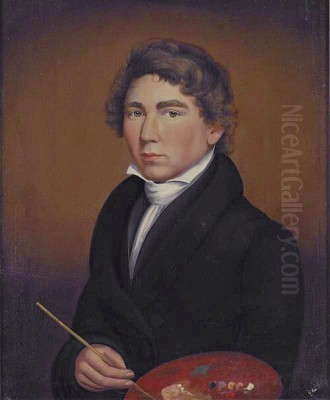
William Matthew Prior (1806-1873) stands as a significant figure in nineteenth-century American art, particularly within the realm of folk portraiture. Born in Bath, Maine, during a period of burgeoning national identity, Prior carved a unique niche for himself, creating a vast body of work that captured the likenesses of ordinary New Englanders. Though lacking formal academic training, his innate talent, entrepreneurial spirit, and distinctive style made him one of the most prolific and recognizable artists of his time, leaving behind a legacy that continues to intrigue art historians and collectors alike.
Early Life and Artistic Awakening in Maine
William Matthew Prior entered the world in 1806 in Bath, Maine, a bustling shipbuilding town. His father was a shipmaster, placing the family within the maritime community that defined coastal Maine. Unlike many aspiring artists of the era who sought formal instruction in academies or traveled abroad, Prior appears to have been largely self-taught. Evidence suggests he was already actively painting by the age of eighteen, around 1824.
His early career unfolded in Portland, Maine, where he began establishing himself as a painter. This period was crucial for honing his skills and developing his artistic identity. Without the constraints or guidance of academic conventions, Prior developed a direct, practical approach to image-making, likely learning through observation, practice, and perhaps interaction with other local craftsmen and artists. His initial work likely included decorative painting alongside portraiture, common practices for artists outside major metropolitan centers.
Formative Influences and Training
While Prior lacked formal schooling, he was not entirely without guidance. His development was shaped by exposure to various artistic practices and potentially brief periods of learning from established figures. Early in his career, he associated with the Hamblin family, painters based in Portland, which proved to be a pivotal connection both personally and professionally. He is known to have worked for or with Almery Hamblin (sometimes referred to as Almira), learning aspects of the trade.
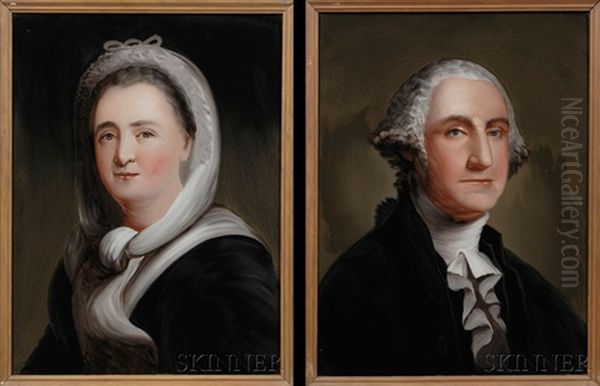
Furthermore, sources indicate he sought to improve his technique by learning from others. He is said to have received some instruction from Charles Codman, recognized as one of Boston's early professional landscape and decorative painters. This suggests an ambition to refine his skills beyond basic limning. He may have also learned decorative techniques, such as painting clock faces or working on glass, from artisans like John Ritto Penniman or even the renowned clockmaking family of Simon Willard and Aaron Willard, who also employed decorative painters. His exposure to the work of acclaimed academic portraitists like Gilbert Stuart, whose portraits of George Washington were widely copied, likely influenced his understanding of likeness and composition, even if his own style diverged significantly.
The Prior-Hamblin Artistic Dynasty
A defining relationship in Prior's life and career was his connection to the Hamblin family of painters. In 1828, he married Rosamond Clough Hamblin (or Hamblen). Rosamond was not merely the wife of an artist; she hailed from an established family of artisans. She and her sisters were described as third-generation painters, indicating a deep-rooted tradition of artistic practice within the family.
This marriage integrated Prior into an active network of artists. Rosamond herself was a painter, and her brothers, Sturtevant J. Hamblen and Joseph H. Hamblen, were also active painters. This family connection likely fostered a collaborative environment, potentially involving shared studio space, materials, or clientele. The Prior-Hamblin group became a significant force in the folk art landscape of Maine and later Boston, producing a large volume of portraits and decorative work.
Relocation to Boston and Career Expansion
Prior worked primarily in Maine until the mid-1830s. Seeking broader opportunities and a larger market, he then relocated with his family to Boston, Massachusetts. Boston, a major cultural and commercial hub, offered a significantly larger potential clientele, ranging from merchants and artisans to professionals and their families.
In Boston, Prior established a studio and continued his prolific output. He lived and worked primarily in East Boston, an area experiencing growth and development. This move marked a new phase in his career, allowing him to fully develop his characteristic style and business model, catering to the city's diverse population, particularly its expanding middle class.
The Signature "Flat Style"
William Matthew Prior is best known for his distinctive portrait style, often described as "flat" or "primitive." He famously advertised portraits "without shade or shadow." This approach involved simplifying forms, minimizing modeling and perspective, and often using bold outlines. The result was a direct, often stark likeness that focused on the essential features of the sitter, particularly the face.
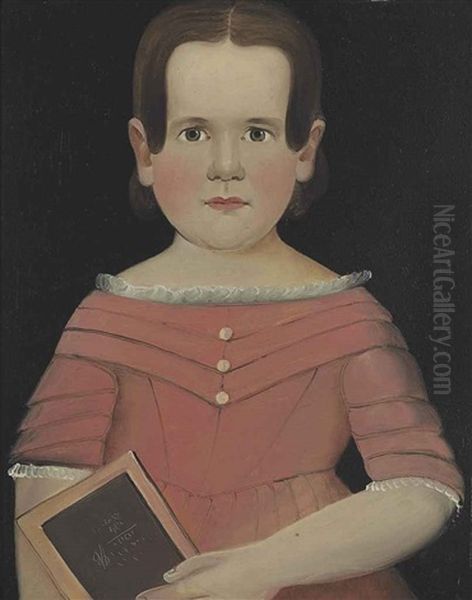
This style was not born from a lack of skill – Prior demonstrated he could paint in a more academic manner when desired – but rather from a conscious choice linked to his market. The flat style was quicker to execute, allowing him to produce portraits rapidly and at a lower cost than his academically trained competitors. Backgrounds were typically plain or minimally detailed, further emphasizing the sitter and streamlining the painting process.
A Democratic Approach to Portraiture
Prior's artistic practice was notably entrepreneurial. He understood the market and tailored his offerings accordingly. His "flat style" portraits were specifically aimed at a middle-class clientele who desired a likeness but could not afford the time or expense of a traditional academic portrait. He advertised his services and prices clearly, making art accessible to a broader segment of society.
An 1831 advertisement explicitly offered "flat pictures" at a "quarter price," highlighting his tiered pricing strategy. Clients could choose between the faster, cheaper flat style or a more detailed, shaded portrait at a higher cost. This pragmatic approach democratized portraiture to some extent, allowing families of modest means to commission likenesses, preserving their images for posterity in a way previously reserved for the wealthier elite. He was, in essence, providing a valuable service to his community.
Diverse Artistic Skills
While most renowned for his oil portraits on canvas or board, Prior's artistic repertoire was broader. The snippets indicate his proficiency extended to various decorative arts. He was skilled in copperplate engraving, suggesting an understanding of printmaking techniques. His abilities included oil painting on gold leaf (verre églomisé, often used for clock faces or mirrors), varnishing, and even mechanical drawing.
Furthermore, he advertised his services in restoring old portraits. This required a different skill set, involving cleaning, repairing, and potentially retouching damaged artworks, demonstrating a technical understanding of paint layers and conservation principles. His work also included painting on glass, notably producing portraits of figures like George Washington, likely based on popular prints or paintings by artists such as Gilbert Stuart. This versatility underscores his identity as a jobbing artist capable of meeting diverse client needs.
Range of Styles
It is important to recognize that Prior did not adhere rigidly to a single style throughout his career or for all commissions. While the "flat style" is his most famous contribution, surviving works show considerable variation. Some portraits exhibit more sophisticated modeling, subtle shading, and attention to detail in clothing and setting, approaching a more conventional, albeit still simplified, academic appearance.
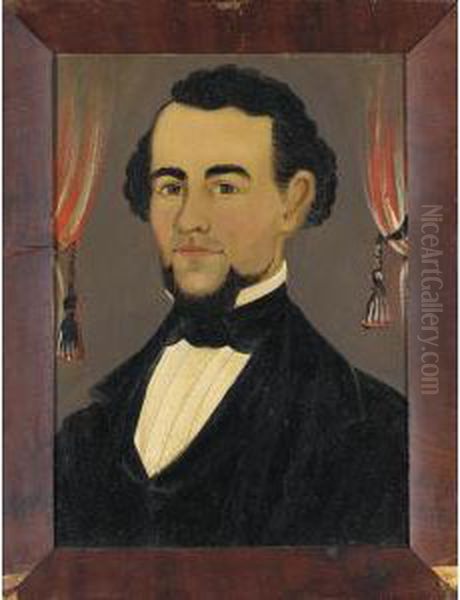
This stylistic flexibility likely reflected client preferences and budgets. A patron willing to pay more might receive a more elaborately finished portrait. Conversely, the quick, flat likenesses served the lower end of the market. This adaptability was key to his success as a working artist supporting a family through his craft in a competitive environment.
Landscapes and Fantasy Scenes
Beyond portraiture, Prior also ventured into other genres, particularly during the 1840s. He created landscapes and imaginative or fantasy scenes. These works often combined various elements like windmills, bridges, architectural structures, and stylized vegetation against distant backgrounds.
According to descriptions, these non-portrait works sometimes employed a distinctive, somewhat muted palette, characterized as "dusty" or utilizing charcoal-grey tones. This suggests a different aesthetic approach compared to the often bright, direct colors found in his portraits. These landscapes and fantasy pictures, while less numerous than his portraits, demonstrate another facet of his artistic interests and capabilities.
Masterworks and Notable Portraits
Several works stand out in Prior's extensive oeuvre. His 1843 group portrait, Three Sisters of the Cropper Family, is frequently cited as a masterpiece of American folk art. It exemplifies his flat style, strong composition, and direct, engaging portrayal of the subjects. The painting captures a sense of familial connection and individual personality despite the stylistic simplification.
Other notable examples include the pair of portraits of Mr. and Mrs. Nancy Lawson (1843), now housed in the Fenimore Art Museum in Cooperstown, New York. These works showcase his typical approach to capturing middle-class sitters. An earlier work, an oil on board self-portrait or portrait labeled Wm. M. Prior of Bath (1838), provides insight into his appearance or self-representation during his Maine period. His numerous glass paintings of George Washington also form a distinct category within his output.
Religious Convictions: The Millerite Connection
Prior's life and art were deeply intertwined with his religious beliefs. He became a fervent follower of William Miller, the founder of Millerism, a significant religious movement in the 1830s and 1840s that anticipated the imminent Second Coming of Christ (the Advent). Prior was not just a passive believer; he actively participated in the movement.
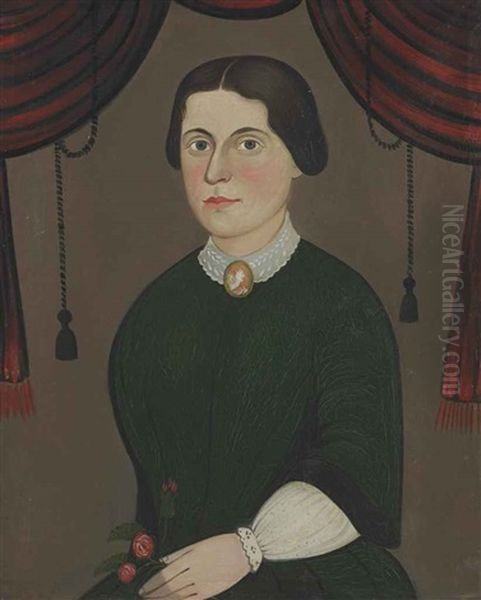
He painted multiple portraits of William Miller, capturing the likeness of the influential preacher. These portraits served not only as personal records but likely also as icons for the movement's followers. Furthermore, Prior created paintings and possibly illustrations intended to promote Millerite doctrines. He is known to have produced works for Joshua Himes, a leading Millerite publisher and organizer. This engagement demonstrates how Prior used his artistic skills in service of his deeply held spiritual convictions.
Social Conscience and Abolitionism
The provided information notes Prior's support for the abolitionist movement, a critical social and political cause in the antebellum United States. While details of his specific activities are scarce in the snippets, this alignment places him within the progressive social currents of his time, particularly strong in New England.
His connection to abolitionism might have been reinforced through his wife's family, the Hamblins, who were also associated with reform movements. Art historically, Prior's work is also noted for its inclusion of Black subjects. While nineteenth-century portrayals of African Americans were often stereotypical, some of Prior's portraits of Black individuals are considered unusually direct and dignified for the period, suggesting a level of respect and engagement that potentially reflects his social views. His art, therefore, offers glimpses into the complex social fabric and racial dynamics of his era.
Contemporaries and Context
William Matthew Prior operated within a vibrant, complex art world. In Boston, he would have been aware of, and competed with, academically trained painters who catered to the city's elite. While their names aren't specified in the snippets, figures like Chester Harding or Francis Alexander were prominent Boston portraitists during parts of Prior's career.
However, Prior's more direct artistic milieu was that of the itinerant or folk painter. He belongs to a generation of artists serving communities outside the major academic centers or catering to different social strata. His contemporaries in this vein include figures like Rufus Porter, known for his murals and miniatures as well as founding Scientific American; Ammi Phillips, another prolific rural portraitist working in Connecticut and New York; and Erastus Salisbury Field, known for his portraits and imaginative historical paintings. While direct collaboration might not have occurred, these artists shared a similar cultural space, adapting artistic conventions to meet the demands of their respective clienteles.
Later Years and Demise
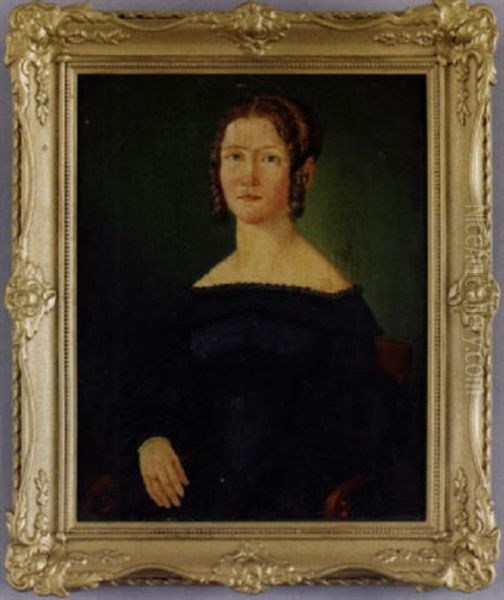
William Matthew Prior remained an active painter in Boston for decades. He continued to produce portraits and other works, supporting his family through his art until the end of his life. His long career spanned a period of significant change in American society and art, from the Jacksonian era through the Civil War and into Reconstruction.
His life concluded in 1873. He succumbed to typhoid fever, a common and often fatal infectious disease in the nineteenth century. He was 66 years old at the time of his death, leaving behind his wife, family, and a remarkable legacy of hundreds, if not thousands, of paintings that documented the faces of his time.
Art Historical Assessment
In the annals of American art history, William Matthew Prior is recognized as a key figure in the folk art tradition. His significance lies not only in the sheer volume of his output but also in his distinctive style and innovative business practices. He successfully bridged the gap between craft and fine art, making portraiture accessible to a wider audience than ever before.
His work has sometimes been debated, with some critics viewing his simplified style as merely a commercial expedient, while others see it as possessing a powerful, naive honesty and a precursor to modernist aesthetics. The flatness, bold lines, and direct gaze characteristic of his best work resonate with later artistic developments that challenged academic realism. His willingness to depict a diverse range of society, including working-class individuals and people of color, adds another layer of historical importance to his work.
Enduring Legacy
Decades after his death, William Matthew Prior's work continues to be studied and appreciated. His paintings are held in numerous museum collections, including the National Gallery of Art, the Museum of Fine Arts, Boston, the Fenimore Art Museum, and various institutions in Maine. His distinctive style makes his work relatively easy to identify, though the sheer number of paintings produced by him and his Hamblin relatives can sometimes complicate attribution.
Renewed scholarly attention, exemplified by exhibitions like the 2014 show "Artist and Visionary: William Matthew Prior Revealed," has shed further light on his life, his diverse artistic practices, his religious beliefs, and his engagement with the social issues of his day. William Matthew Prior remains a compelling figure – an adaptable, entrepreneurial artist whose straightforward portraits offer an invaluable window into the lives and faces of nineteenth-century New England.